#ernest laszlo
Photo
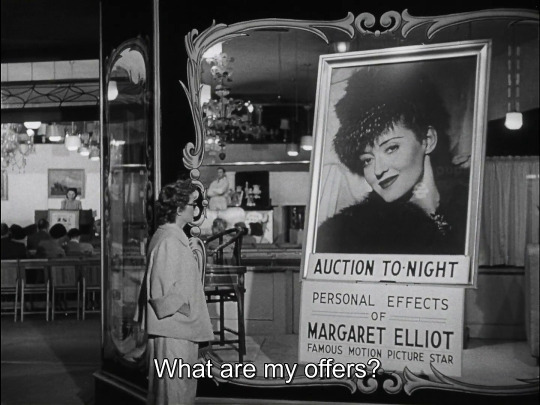




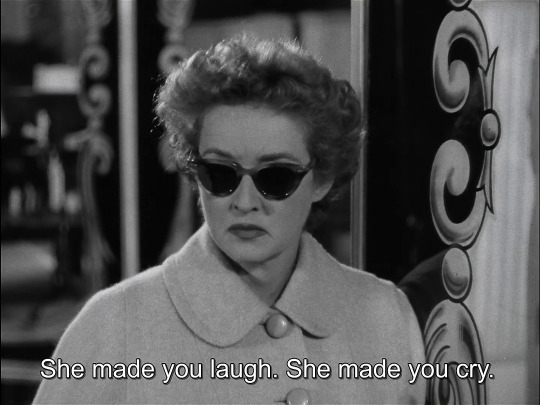


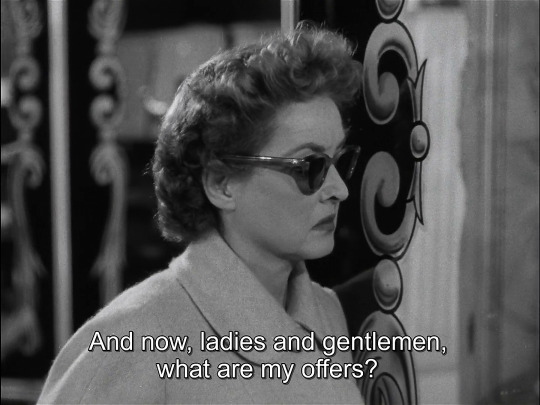

The Star (Stuart Heisler, 1952).
#the star (1952)#stuart heisler#bette davis#dale eunson#katherine albert#ernest laszlo#edward g. boyle
16 notes
·
View notes
Photo


ROCK HUDSON and KIRK DOUGLAS
━ [the last sunset, ‘61. dir. robert aldrich, cin. ernest laszlo]
#sergio leone listing this as an influence makes cents#the last sunset 1961#robert aldrich#ernest laszlo#rock hudson#kirk douglas
6 notes
·
View notes
Photo



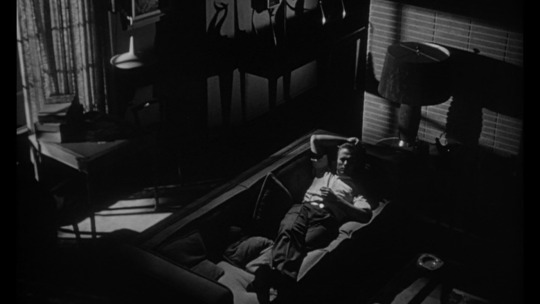




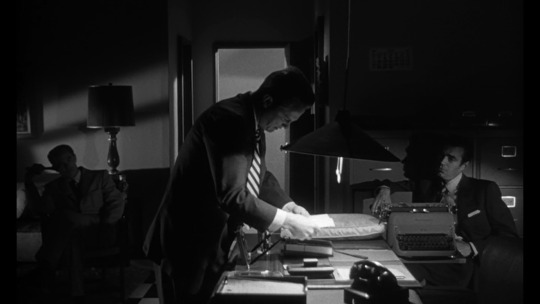

Kiss Me Deadly (1955)
Country: United States
Directed by: Robert Aldrich
Cinematography by: Ernest Laszlo
#Kiss Me Deadly#United States#Robert Aldrich#Ernest Laszlo#Film Noir#Mystery#Thriller#Existential#Crime Drama#United Artists#The Criterion Collection#1950s
15 notes
·
View notes
Text
Director Bert I. Gordon finally makes an appearance on the podcast with TORMENTED (1960)! Taking a break from his "Thing Big" schtick, Gordon takes on a ghost story that stars Richard Carlson, Juli Reding and Susan Gordon.
Context setting 00:00; Synopsis 21:16; Discussion 34:28; Ranking 50:42
#horror#podcast#bert i gordon#thing big#tormented#richard carlson#susan gordon#lugene sanders#juli reding#joe turkel#lillian adams#gene roth#vera marsh#harry fleer#paul frees#george worthing yates#ernest laszlo#john bushelman#albert glasser#calvin jackson#allied artists#SoundCloud
1 note
·
View note
Photo
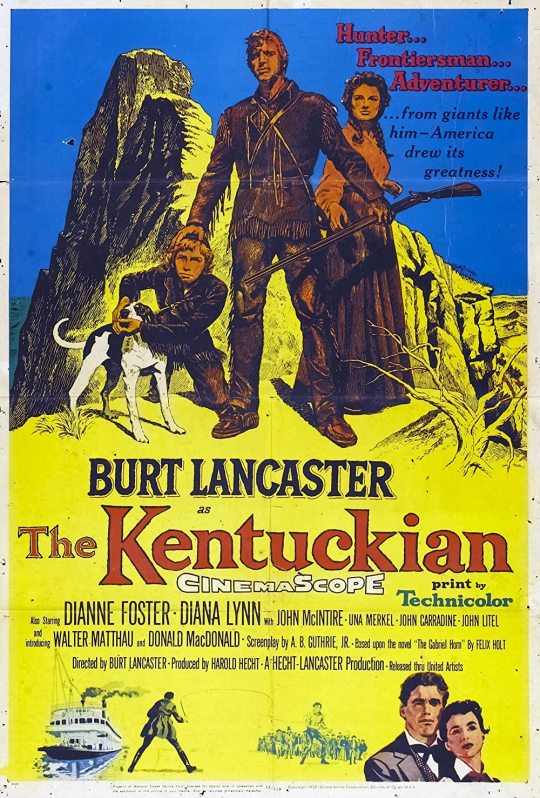

#burt lancaster#1955#1950s#western#usa#united artists#harold hecht#felix holt#bernard herrmann#19th Century#drama#family#texas#ernest laszlo#a.b. guthrie jr
0 notes
Text
𝔇𝔞𝔫𝔦𝔢𝔩 𝔅𝔯𝔲̈𝔥𝔩

𝐌𝐀𝐒𝐓𝐄𝐑𝐋𝐈𝐒𝐓
𝐁𝐚𝐫𝐨𝐧 𝐇𝐞𝐥𝐦𝐮𝐭 𝐙𝐞𝐦𝐨
𝒀𝒐𝒖 𝑭𝒆𝒆𝒍 𝑺𝒐 𝑳𝒐𝒏𝒆𝒍𝒚 𝒀𝒐𝒖 𝑪𝒐𝒖𝒍𝒅 𝑫𝒊𝒆 | 𝑻𝒉𝒖𝒏𝒅𝒆𝒓𝒃𝒐𝒍𝒕𝒔!𝑨𝑼 | 𝑩𝒂𝒓𝒐𝒏 𝒁𝒆𝒎𝒐 𝒙 𝑭𝒆𝒎!𝑹𝒆𝒂𝒅𝒆𝒓 — 𝑶𝒏 𝑾𝒓𝒊𝒕𝒊𝒏𝒈 [𝒐𝒏𝒆-𝒔𝒉𝒐𝒕]
After you helped Val and Yelena take the Baron out of the Raft, all go to a bunker, where you'll stay hid, until the day of your mission.
𝑭𝒓𝒆𝒆 𝑭𝒂𝒍𝒍 | 𝑻𝑭𝑨𝑻𝑾𝑺 𝑲𝒊𝒏𝒈𝒔𝒎𝒂𝒏!𝑨𝑼 | 𝑩𝒂𝒓𝒐𝒏 𝒁𝒆𝒎𝒐 𝒙 𝑭𝒆𝒎!𝑹𝒆𝒂𝒅𝒆𝒓 — 𝑻𝑩𝑨
𝒀𝒐𝒖 𝑾𝒂𝒏𝒕 𝑰𝒕 𝑫𝒂𝒓𝒌𝒆𝒓 | 𝑺𝒉𝒂𝒓𝒐𝒏 𝑪𝒂𝒓𝒕𝒆𝒓 𝒙 𝑭𝒆𝒎!𝑹𝒆𝒂𝒅𝒆𝒓 𝒙 𝑩𝒂𝒓𝒐𝒏 𝒁𝒆𝒎𝒐 — 𝑻𝑩𝑨 [𝒐𝒏𝒆-𝒔𝒉𝒐𝒕]
𝑭𝒐𝒓 𝑻𝒉𝒆 𝑻𝒉𝒓𝒐𝒏𝒆 | 𝑯𝒊𝒔𝒕𝒐𝒓𝒊𝒄𝒂𝒍!𝒁𝒆𝒎𝒐 𝒙 𝑭𝒆𝒎!𝑹𝒆𝒂𝒅𝒆𝒓 — 𝑻𝑩𝑨 [𝒔𝒉𝒐𝒓𝒕-𝒇𝒊𝒄]
𝐃𝐨𝐜𝐭𝐨𝐫 𝐋𝐚𝐬𝐳𝐥𝐨 𝐊𝐫𝐞𝐢𝐳𝐥𝐞𝐫
𝑹𝒆𝒎𝒊𝒏𝒊𝒔𝒄𝒆𝒏𝒄𝒆 | 𝑫𝒂𝒓𝒌!𝑳𝒂𝒔𝒛𝒍𝒐 𝑲𝒓𝒆𝒊𝒛𝒍𝒆𝒓 𝒙 𝑭𝒆𝒎!𝑹𝒆𝒂𝒅𝒆𝒓 — 𝑻𝑩𝑨 [𝒐𝒏𝒆-𝒔𝒉𝒐𝒕]
𝑻𝒉𝒆 𝑾𝒆𝒊𝒈𝒉𝒕 𝑶𝒇 𝑫𝒓𝒆𝒂𝒎𝒔 | 𝑳𝒂𝒔𝒛𝒍𝒐 𝑲𝒓𝒆𝒊𝒛𝒍𝒆𝒓 𝒙 𝑭𝒆𝒎!𝑹𝒆𝒂𝒅𝒆𝒓— 𝑻𝑩𝑨 [𝒐𝒏𝒆-𝒔𝒉𝒐𝒕]
𝐄𝐫𝐧𝐞𝐬𝐭 𝐒𝐜𝐡𝐦𝐢𝐝𝐭
𝑫𝒆𝒗𝒊𝒍 𝑰𝒏 𝒀𝒐𝒖𝒓 𝑬𝒚𝒆 | 𝑬𝒓𝒏𝒆𝒔𝒕 𝑺𝒄𝒉𝒎𝒊𝒅𝒕 𝒙 𝑭𝒆𝒎!𝑹𝒆𝒂𝒅𝒆𝒓 — 𝑻𝑩𝑨 [𝒐𝒏𝒆-𝒔𝒉𝒐𝒕]
𝑻𝒉𝒆 𝑹𝒂𝒊𝒏 𝑫𝒓𝒐𝒑𝒔 𝑴𝒂𝒌𝒆𝒔 𝑹𝒐𝒔𝒆𝒔 𝑩𝒍𝒐𝒐𝒎 | 𝑬𝒓𝒏𝒆𝒔𝒕 𝑺𝒄𝒉𝒎𝒊𝒅𝒕 𝒙 𝑭𝒆𝒎!𝑹𝒆𝒂𝒅𝒆𝒓 — 𝑻𝑩𝑨 [𝒐𝒏𝒆-𝒔𝒉𝒐𝒕]
Ernest survived the dark events in the Cloverfield station, and when he and Ava got home, both of them were different. One night he just can't sleep, the traumatizing images in his dreams. Everything was too much to him, after all, he was only a physicist, he's not supposed to deal with that kind of insanity. The anger fills his veins when the painful memories of Kiel and Tam blow in his mind. He's crying angrily when finally notices you on his side. A comforting hand on his shoulder.
𝐒𝐞𝐛𝐚𝐬𝐭𝐢𝐚𝐧 𝐙𝐨̈𝐥𝐥𝐧𝐞𝐫
𝑨 𝑴𝒆𝒎𝒐𝒓𝒚 𝑶𝒇 𝑨 𝑭𝒓𝒆𝒆 𝑭𝒆𝒔𝒕𝒊𝒗𝒂𝒍 | 𝑺𝒆𝒃𝒂𝒔𝒕𝒊𝒂𝒏 𝒁𝒐̈𝒍𝒍𝒏𝒆𝒓 𝒙 𝑭𝒆𝒎!𝑹𝒆𝒂𝒅𝒆𝒓 — 𝑻𝑩𝑨 [𝒐𝒏𝒆-𝒔𝒉𝒐𝒕]
𝔒ℭ'𝔰
𝑳𝒆𝒏𝒛. 𝑴. 𝑯𝒆𝒊𝒏𝒅𝒆𝒎𝒂𝒏𝒏
𝑻𝒉𝒂𝒏𝒂𝒕𝒐𝒔 | 𝑳𝒆𝒏𝒛 𝑯𝒆𝒊𝒏𝒅𝒆𝒎𝒂𝒏𝒏 𝒙 𝑭𝒆𝒎!𝑹𝒆𝒂𝒅𝒆𝒓/𝑴𝒂𝒍𝒆!𝑹𝒆𝒂𝒅𝒆𝒓 — 𝑶𝒏 𝑮𝒐𝒊𝒏𝒈 [𝒔𝒉𝒐𝒓𝒕-𝒇𝒊𝒄] [𝑬𝒏𝒈𝒍𝒊𝒔𝒉]
Lenz was a handsome, dangerous man, drowned in his own dirty little secrets and his own thirsty issues. One glorious night gave birth to what would become the Devil himself.
This is an anthology. Same character, different situations, different times.
In Greek mythology, Thanatos was the personification of death. He was a minor figure in Greek mythology, often referred to but rarely appearing in person. (Wikipedia)
𝐇𝐞𝐢𝐧𝐫𝐢𝐜𝐡 𝐇𝐞𝐢𝐧𝐞𝐫
Inspired by the OC Patrick Klein, created by @creme-bruhlee
𝑨𝒔 𝒕𝒉𝒆 𝑾𝒐𝒓𝒍𝒅 𝑪𝒂𝒗𝒆𝒔 𝑰𝒏 | 𝑯𝒆𝒊𝒏𝒓𝒊𝒄𝒉 𝑯𝒆𝒊𝒏𝒆𝒓 𝒙 𝑾𝒂𝒓 𝑵𝒖𝒓𝒔𝒆!𝑴𝒂𝒊𝒅!𝑭𝒆𝒎!𝑹𝒆𝒂𝒅𝒆𝒓 — 𝑻𝑩𝑨 [𝒔𝒉𝒐𝒓𝒕-𝒇𝒊𝒄]
𝐅𝐚𝐭𝐡𝐞𝐫 𝐌𝐚𝐭𝐞𝐨 𝐑𝐨𝐦𝐞𝐫𝐨
Inspired by the OC Father González/Domingo, created by @creme-bruhlee
𝕿𝖍𝖊 𝕯𝖊𝖒𝖔𝖓, 𝕿𝖍𝖊 𝕳𝖊𝖗𝖊𝖙𝖎𝖈 𝖆𝖓𝖉 𝕿𝖍𝖊 𝕮𝖔𝖗𝖗𝖚𝖕𝖙𝖊𝖉 𝕾𝖊𝖗𝖎𝖊𝖘
[𝕰𝖓𝖌𝖑𝖎𝖘𝖍 𝕸𝖆𝖘𝖙𝖊𝖗𝖑𝖎𝖘𝖙] [𝕻𝖔𝖗𝖙𝖚𝖌𝖚𝖊𝖘𝖊 𝕸𝖆𝖘𝖙𝖊𝖗𝖑𝖎𝖘𝖙]
𝑰𝒏 𝑵𝒐𝒄𝒕𝒆𝒎 | 𝑭𝒂𝒕𝒉𝒆𝒓 𝑹𝒐𝒎𝒆𝒓𝒐 𝒙 𝑫𝒆𝒎𝒐𝒏!𝑹𝒆𝒂𝒅𝒆𝒓
[𝑬𝒏𝒈𝒍𝒊𝒔𝒉] [𝑷𝒐𝒓𝒕𝒖𝒈𝒖𝒆𝒔𝒆]
Mateo is a man of faith, a good pastor and a just presbytery. However, even on its pure surface, the good father concealed his impure thoughts towards the young novice who always attended his masses. On a particularly revealing night, the priest comes across the entity his repressed desires have invoked.
Shall he surrender to the unholy tongue of a demon?
𝔬𝔱𝔥𝔢𝔯 𝔴𝔬𝔯𝔨𝔰
𝔗𝔞𝔤𝔩𝔦𝔰𝔱
@stardustandgunpowder
#helmut zemo x reader#helmut zemo x ofc#baron zemo x ofc#ebie's writing#ebie's masterlist#brühl masterlist#ernest schmidt x reader#sebastian zollner x reader#laszlo kreizler x reader#laszlo kreizler x ofc#baron zemo x reader
17 notes
·
View notes
Text
Nightmare Fuel Art Master-post, Vol. I
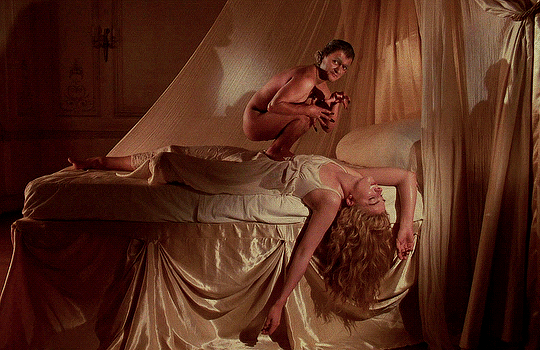
Regularly updated!
15th Century
Gerard David
Hans Holbein
Hans Memling
Hieronymous Bosch
Lucas Cranach the Elder
Matthias Grunewald
Titian
16th Century
Adriaen van de Venne
Artemisia Gentileschi
Filippo Napoletano
Hans Baldung Grien
Herri Met de Bles
Jacopo Ligozzi
Jan Mandijn
Jan Massys
Pieter Bruegel the Elder
17th Century
Caravaggio
Francesco Furini
Frans Francken II
Juan de Valdes Leal
Jusepe de Ribera
Leonaert Bramer
Peter Paul Rubens
Salvator Rosa
18th Century
Edvard Munch
Francisco de Goya
Henry Fuseli
J.M.W. Turner
Karl Alexander Wilke
Katsushika Hokusai
Paolo Vincenzo Bonomini
William Blake
19th Century
Amedee-Ernest Lynen
Antoine Wiertz
Armand Rassenfosse
Arnold Bocklin
Carlos Schwabe
Edmond Louis Dupain
Felicien Rops
Francesco Scaramuzza
Franz von Stuck
Georges Rochegrosse
George Frederic Watts
Gustave Dore
Gustave Moreau
Henri Regnault
Ilya Repin
Jakub Schikaneder
James Tissot
Jean Francois Millet
Jean Leon Gerome
Jean Paul Laurens
Jean Veber
Jeno Gyarfas
Jose Casado del Alisal
Laszlo Mednyanszky
Louis Gallait
Maximilian Pirner
Odilon Redon
Paul Burck
Theodore Gericault
Theodor Kittelsen
Theophile Schuler
Tsukioka Yoshitoshi
Wilhelm Kotarbinski
William Holbrook Beard
Witold Wojtkiewicz
“Turn of the Century”
Alberto Martini
Alfred Kubin
Antonio Rizzi
Egon Schiele
Frantisek Kupka
Fritz Gareis
Georges Desvallieres
Harry Clarke
Heinrich Kley
Henryk Weyssenhoff
James Ensor
Jaroslav Panuska
Jean Delville
Josef Mandl
Julien Adolphe-Duvocelle
Kathe Kollwitz
Manuel Orazi
Marian Wawrzeniecki
Oscar Parviainen
Piotr Stachiewicz
Richard Tennant Cooper
Sascha Schneider
Sergius Hruby
Wladyslaw Podkowinski
Vasily Vereshchagin
20 notes
·
View notes
Photo


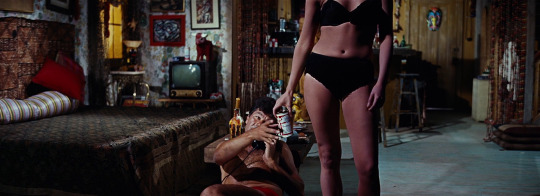
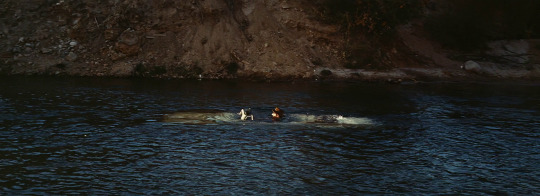
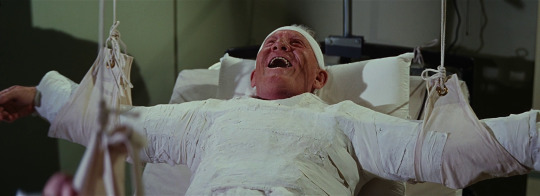



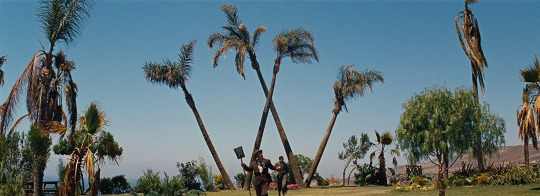

“This is no place for a convertible!"
It’s a Mad, Mad, Mad, Mad World, 1963.
Dir. Stanley Kramer | Writ. William & Tania Rose | DOP Ernest Laszlo
20 notes
·
View notes
Photo

William Holden in Stalag 17 (Billy Wilder, 1953)
Cast: William Holden, Don Taylor, Otto Preminger, Robert Strauss, Harvey Lembeck, Richard Erdman, Peter Graves, Neville Brand, Sig Ruman, Edmund Trczinski,. Screenplay: Billy Wilder, Edwin Blum, based on a play by Donald Bevan and Edmund Trzcinski. Cinematography: Ernest Laszlo. Art direction: Franz Bachelin, Hal Pereira. Film editing: George Tomasini. Music: Franz Waxman.
After their success with Sunset Blvd. (1950), Billy Wilder and Charles Brackett went their separate ways. They had been one of the most successful teams in Hollywood history since 1938, when they began collaborating as screenwriters, and then as a producer (Brackett), director (Wilder), and co-writer team starting with Five Graves to Cairo in 1943. But Wilder decided that he wanted to be a triple-threat: producer, director, and writer. His first effort in this line, Ace in the Hole (1951), was, however, a commercial flop -- now regarded as a classic. So he seems to have decided to go for the sure thing: film versions of plays that had been Broadway hits and therefore had a built-in attraction to audiences. His next three movies, Stalag 17, Sabrina (1954), and The Seven Year Itch (1955), all fell into this category. But what Wilder really needed was a steady writing collaborator, which he didn't find until 1957, when he teamed up with I.A.L. Diamond for the first time on Love in the Afternoon. The collaboration hit pay dirt in 1959 with Some Like It Hot, and won Wilder his triple-threat Oscar with The Apartment (1960). Which is all to suggest that Stalag 17 appeared while Wilder was in a kind of holding pattern in his career. It's not a particularly representative work, given its origins on stage which bring certain expectations from those who saw it there and also from those who want to see a reasonable facsimile of the stage version. The play, set in a German P.O.W. camp in 1944, was written by two former inmates of the titular prison camp, Donald Bevan and Edmund Trczinski. In revising it, Wilder built up the character of the cynical Sgt. Sefton (William Holden), partly to satisfy Holden, who had walked out of the first act of the play on Broadway. Sefton is in many ways a redraft of Holden's Joe Gillis in Sunset Blvd., worldly wise and completely lacking in sentimentality, a character type that Holden would be plugged into for the rest of his career, and it won him the Oscar that he probably should have won for that film. But it's easy to see why Holden wanted the role beefed up, because Stalag 17 is the kind of play and movie that it's easy to get lost in: an ensemble with a large all-male cast, each one eager to make his mark. Harvey Lembeck and Robert Strauss, as the broad comedy Shapiro and "Animal," steal most of the scenes -- Strauss got a supporting actor nomination for the film -- and Otto Preminger as the camp commandant and Sig Ruman as the German Sgt. Schulz carry off many of the rest. The cast even includes one of the playwrights, Edmund Trczinski, as "Triz," the prisoner who gets a letter from his wife, who claims that he "won't believe it," but an infant was left on her doorstep and it looks just like her. Triz's "I believe it," which he obviously doesn't, becomes a motif through the film. Bowdlerized by the Production Code, Stalag 17 hasn't worn well, despite Holden's fine performance, and it's easy to blame it for creating the prison-camp service comedy genre, which reached its nadir in the obvious rip-off Hogan's Heroes, which ran on TV for six seasons, from 1965 to 1971.
2 notes
·
View notes
Text



EVER THE HARDBOILED LADIES MAN -- MIKE HAMMER & HIS NOIR SQUEEZES.
PIC(S) INFO: Spotlight on promo shots of late, great American actor Ralph Meeker✝ as hardboiled private eye Mike Hammer, with supporting lady actors Cloris Leachman✝, Maxine Cooper✝, & Gaby Rogers in the 1955 atomic thriller "Kiss Me Deadly," produced & directed by Robert Aldrich.
Resolution at 1055x1280 & 1000x1126.
FILM MINI-OVERVIEW: "Condemned on its release as harmful to minors, Robert Aldrich’s late contribution to the B-noir tradition, by way of Mickey Spillane, couldn’t quite find its audience in 1955. But it now stands as a crucial influence on what would become the French new wave, an irresistibly seedy trip through the Los Angeles underworld, and a valuable artifact of Cold War anxiety. After a mysterious woman (debutante actress Cloris Leachman) flags down Mike Hammer (Ralph Meeker) on a highway and is subsequently murdered, the downmarket private dick reads this chance encounter as his ticket to the big time, and he sniffs out a trail of intrigue through many a gutter and back alley to an unbelievable secret. Cold, calculating, even downright nasty, the antihero Hammer would be focus-grouped right out of existence if he were screenwritten today. And with its delectable period detail and the magnificent compositions and rich depth of field achieved by Aldrich and his cinematographer, Ernest Laszlo, "Kiss Me Deadly" demands to be seen on the big screen. Go now."
-- TIME OUT (Worldwide News)
Sources: www.posterazzi.com/kiss-me-deadly-from-left-ralph-meeker-cloris-leachman-1955-photo-print-item-varevcmcdkimeec065h & www.timeout.com/movies/kiss-me-deadly.
#Kiss Me Deadly Film#Kiss Me Deadly 1955#Kiss Me Deadly#Atomic Noir#Film Noir#Noir Cinema#Cold War#Old Hollywood#Robert Aldrich#Kiss Me Deadly Movie#Cloris Leachman#Ralph Meeker#Sci-fi#Mickey Spillane#Apocalyptic Noir#50s#Crime Films#Kiss Me Deadly 1955 Film#Classic Cinema#Sci-fi Fri#Crime Movies#Nuclear Paranoia#Apocalypse Noir#Los Angeles#Cinema#Maxine Cooper#Mike Hammer#American Style#Noir#1950s
1 note
·
View note
Text
FANTASTIC VOYAGE (1966) – Episode 146 – Decades Of Horror: The Classic Era
“Twelve minutes left. What a time to run out of sugar!” Especially when you’re having a little coffee with your sugar. Join this episode’s Grue-Crew – Chad Hunt, Whitney Collazo, Daphne Monary-Ernsdorff, and Jeff Mohr – as they gaze in wonder at Fantastic Voyage (1966), remarkable for its special effects and for being one of Raquel Welch’s 1966 breakout roles.
Decades of Horror: The Classic Era
Episode 146 – Fantastic Voyage (1966)
Join the Crew on the Gruesome Magazine YouTube channel!
Subscribe today! And click the alert to get notified of new content!
https://youtube.com/gruesomemagazine
ANNOUNCEMENT
Decades of Horror The Classic Era is partnering with THE CLASSIC SCI-FI MOVIE CHANNEL, THE CLASSIC HORROR MOVIE CHANNEL, and WICKED HORROR TV CHANNEL
Which all now include video episodes of The Classic Era!
Available on Roku, AppleTV, Amazon FireTV, AndroidTV, Online Website.
Across All OTT platforms, as well as mobile, tablet, and desktop.
https://classicscifichannel.com/; https://classichorrorchannel.com/; https://wickedhorrortv.com/
A scientist is nearly assassinated. In order to save him, a submarine is shrunken to microscopic size and injected into his bloodstream with a small crew. Problems arise almost as soon as they enter it.
Director: Richard Fleischer
Writing Credits: Harry Kleiner (screenplay); David Duncan (adaptation); (story by) Otto Klement and Jerome Bixby (as Jay Lewis Bixby)
Music by: Leonard Rosenman
Cinematography: Ernest Laszlo
Film Editing: William B. Murphy
Sound Department: Walter Rossi (Sound Effects) (uncredited)
Art Direction: Jack Martin Smith, Dale Hennesy
Set Decoration: Walter M. Scott, Stuart A. Reiss
Visual Effects:
Art Cruickshank (special photographic effects)
L.B. (Bill) Abbott (special photographic effects)
Emil Kosa Jr. (special photographic effects)
Marcel Delgado (miniatures) (uncredited)
Selected Cast:
Stephen Boyd as Charles Grant
Raquel Welch as Cora Peterson, the technical asst for Dr. Duval
Edmond O’Brien as General Alan Carter
Donald Pleasence as Dr. Michaels
Arthur O’Connell as Colonel Donald Reid
William Redfield as Captain Bill Owens
Arthur Kennedy as Dr. Peter Duval
Jean Del Val as Dr. Jan Benes
Barry Coe as communications aide
Ken Scott as a Secret Service agent
Shelby Grant as nurse
James Brolin as technician
James Doohan as Dr. Sawyer (Hypothermia technician) (uncredited)
Raquel Welch passed away on 15 February 2023, so the Classic Era Grue Crew thought a fitting tribute would be to cover one of her first breakout roles. Released a few weeks before One Million Years B.C. (1966), Fantastic Voyage features her as the only woman in a seven-member ensemble cast populated by excellent character actors, and she proves herself up to the task. The film’s crew is also the recipient of two Academy Awards with an additional three nominations. The Grue Crew goes a tiny bit giddy over this influential classic from the 60s. Check out what they have to say.
At the time of this writing, Fantastic Voyage is available to stream from most PPV sites, and as a very economical Blu-ray treatment from 20th Century Studios.
Gruesome Magazine’s Decades of Horror: The Classic Era records a new episode every two weeks. Up next in their very flexible schedule is one chosen by Daphne, the BBC TV Live production of Nineteen Eighty-Four (1954), starring Pete Cushing, Yvonne Mitchell, Donald Pleasence, and André Morell!
Please let them know how they’re doing! They want to hear from you – the coolest, grooviest fans: leave them a message or leave a comment on the Gruesome Magazine YouTube channel, the site, or email the Decades of Horror: The Classic Era podcast hosts at [email protected]. To each of you from each of them, “Thank you so much for watching and listening!”
Check out this episode!
0 notes
Photo
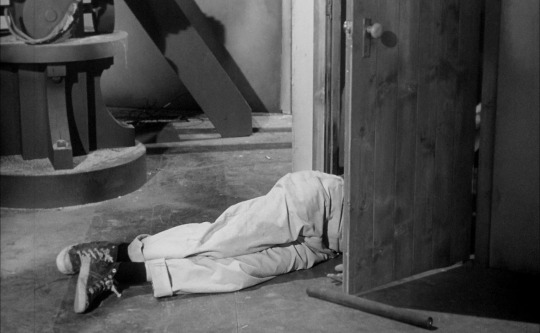




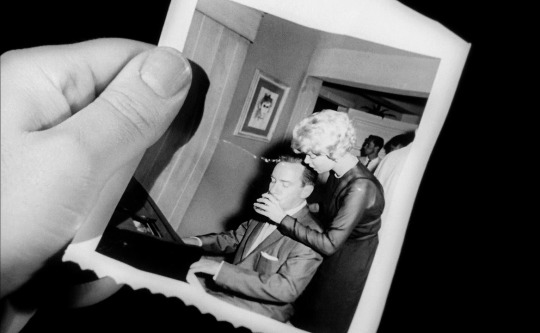


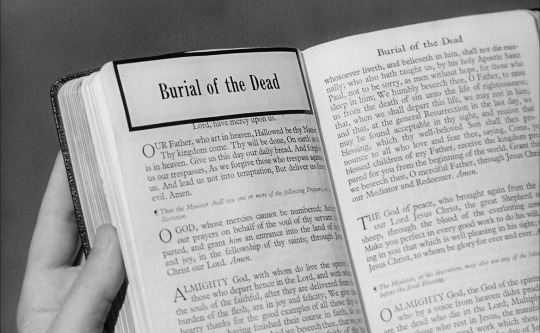

Tormented (Bert I. Gordon, 1960).
#tormented#tormented (1960)#bert i. gordon#susan gordon#richard carlson#juli reding#ernest laszlo#john a. bushelman#gabriel scognamillo#gene redd#herman e. townsley#flora m. gordon
35 notes
·
View notes
Text
Daftar Top Skor Piala Dunia Sejak Tahun 1930-2018

1. Top Skor Piala Dunia 1930
8 gol - Guillermo Stabile (Argentina)
5 gol - Pedro Cea (Uruguay)
4 gol - Bert Patenaude (Amerika Serikat)
2. Top Skor Piala Dunia 1934
5 gol - Oldrich Nejedly (Cekoslovakia)
4 gol - Angelo Schiavio (Italia) dan Edmund Conen (Jerman)
3 gol - Raimundo Orsi (Italia) dan Leopold Kielholz (Swiss)
3. Top Skor Piala Dunia 1938
7 gol - Leonidas (Brasil)
5 gol - Silvio Piola (Italia), Gyula Zsengeller (Hungaria), dan Gyorgy Sarosi (Hungaria)
4 gol - Gino Colaussi (Italia) dan Ernest Wilimowski (Polandia)
4. Top Skor Piala Dunia 1950 REMIPOKERGG
8 gol - Ademir de Menez (Brasil)
5 gol - Oscar Miguez (Uruguay)
4 gol - Telmo Zarra (Spanyol), Estanislau Basora (Spanyol), Chico (Brasil), dan Alcides Ghiggia (Uruguay)
5. Top Skor Piala Dunia 1954
11 gol - Sandor Kocsis (Hungaria)
6 gol - Josef Hugi (Swiss), Max Morlock (Jerman Barat), dan Erich Probst (Austria)
4 gol - Ferenc Puskas (Hungaria), Nandor Hidegkuti (Hungaria), Helmut Rahn (Jerman Barat), Hans Schafer (Jerman Barat), Robert Ballaman (Swiss), Carlos Borges (Uruguay), dan Ottmar Walter (Jerman Barat)
6. Top Skor Piala Dunia 1958
13 gol - Just Fontaine (Prancis)
6 gol - Pele (Brasil) dan Helmut Rahn (Jerman Barat)
5 gol - Vava (Brasil) dan Peter McParland (Irlandia Utara)
7. Top Skor Piala Dunia 1962
4 gol - Garrincha (Brasil), Vava (Brasil), Valentin Ivanov (Uni Soviet), Florian Albert (Hungaria), Drazan Jerkovic (Yugoslavia), dan Leonel Sanchez (Chile)
3 gol - Amarildo (Brasil), Adolf Scherer (Cekoslovakia), Lajos Tichy (Hungaria), dan Milan Galic (Yugoslavia)
8. Top Skor Piala Dunia 1966
9 gol - Eusébio (Portugal)
6 gol - Helmut Haller (Jerman Barat)
4 gol - Geoff Hurst (Inggris), Franz Beckenbauer (Jerman Barat), Ferenc Bene (Hungaria), dan Valeriy Porkujan (Uni Soviet)
9. Top Skor Piala Dunia 1970
10 gol - Gerd Muller (Jerman Barat)
7 gol - Jairzinho (Brasil)
5 gol - Teofilo Cubillas (Peru)
4 gol - Pele (Brasil) dan Anatoliy Byshovets (Uni Soviet)
10. Top Skor Piala Dunia 1974
7 gol - Grzegorz Lato (Polandia)
5 gol - Johan Neeskens (Belanda) dan Andrzej Szarmach (Polandia)
4 gol - Johnny Rep (Belanda), Gerd Muller (Jerman Barat), dan Ralf Edstrom (Swedia)
LANJUTKAN MEMBACA ARTIKEL DI BAWAH
Editor’s Picks
4 Grup Neraka Piala Dunia 2022, Siap Tebar Ancaman
Jadwal 4 Wakil Garuda Di Perempat Final Australia Open 2022
Pembalap MotoGP Yang Paling Banyak Terjatuh Pada 2022, Siapa?
11. Top Skor Piala Dunia 1978 303LAPAK PUSAT
6 gol - Mario Kempes (Argentina)
5 gol - Teofilo Cubillas (Peru) dan Rob Rensenbrink (Belanda)
4 gol - Leopoldo Luque (Argentina) dan Hans Krankl (Austria)
3 gol - Paolo Rossi (Italia), Johnny Rep (Belanda), Dirceu (Brasil), Roberto Dinamite (Brasil) dan Karl-Heinz Rummenigge (Jerman Barat)
12. Top Skor Piala Dunia 1982
6 gol - Paolo Rossi (Italia)
5 gol - Karl-Heinz Rummenigge (Jerman Barat)
4 gol - Zico (Brasil) dan Zbigniew Boniek (Polandia)
3 gol - Alain Giresse (Prancis), Falcao (Brasil), Laszlo Kiss (Hungaria), dan Gary Armstrong (Irlandia Utara)
13. Top Skor Piala Dunia 1986
6 gol - Gary Lineker (Inggris)
5 gol - Diego Maradona (Argentina), Emilio Butragueno (Spanyol), dan Careca (Brasil)
4 gol - Alessandro Altobelli (Italia), Preben Elkjaer (Denmark), Igor Belanov (Uni Soviet), dan Jorge Valdano (Argentina)
14. Top Skor Piala Dunia 1990
6 gol - Salvatore Schillaci (Italia)
5 gol - Thomas Skuhravy (Cekoslovakia)
4 gol - Roger Milla (Kamerun)
15. Top Skor Piala Dunia 1994
6 gol - Hristo Stoichkov (Bulgaria) dan Oleg Salenko (Rusia)
5 gol - Romario (Brasil), Kennet Andersson (Swedia), Roberto Baggio (Italia), dan Jurgen Klinsmann (Jerman)
4 gol - Gabriel Batistuta (Argentina), Martin Dahlin (Swedia), dan Florin Răducioiu (Rumania)
16. Top Skor Piala Dunia 1998
6 gol - Davor Suker (Kroasia)
5 gol - Gabriel Batistuta (Argentina) dan Christian Vieri (Italia)
4 gol - Ronaldo (Brasil), Marcelo Salas (Chile), dan Luis Hernandez (Meksiko)
17. Top Skor Piala Dunia 2002
8 gol - Ronaldo Nazario (Brasil)
5 gol - Miroslav Klose (Jerman) dan Rivaldo (Brasil)
4 gol - Christian Vieri (Italia) dan Jon Dahl Tomasson (Denmark)
18. Top Skor Piala Dunia 2006
5 gol - Miroslav Klose (Jerman)
3 gol - Hernan Crespo (Argentina), Ronaldo Nazario (Brasil), Thierry Henry (Prancis), Zinedine Zidane (Prancis), Fernando Torres (Spanyol), David Villa (Spanyol), Maxi Rodriguez (Argentina), dan Lukas Podolski (Jerman)
19. Top Skor Piala Dunia 2010
5 gol - Thomas Muller (Jerman), David Villa (Spanyol), Wesley Sneijder (Belanda), dan Diego Forlan (Uruguay)
4 gol - Gonzalo Higuain (Argentina), Miroslav Klose (Jerman), dan Robert Vittek (Slovakia)
3 gol - Luis Fabiano (Brasil), Asamoah Gyan (Ghana), Landon Donovan (Amerika Serikat), dan Luis Suárez (Uruguay)
20. Top Skor Piala Dunia 2014
6 gol - James Rodriguez (Kolombia)
5 gol - Thomas Muller (Jerman)
4 gol - Neymar (Brasil), Lionel Messi (Argentina), dan Robin van Persie (Belanda)
3 gol - Arjen Robben (Belanda), Karim Benzema (Prancis), Enner Valencia (Ekuador), Andre Schurrle (Jerman), dan Xherdan Shaqiri (Swiss)
21. Top Skor Piala Dunia 2018
6 gol - Harry Kane (Inggris)
4 gol - Antoine Griezmann (Prancis), Romelu Lukaku (Belgia), Denis Cherysev (Rusia), Kylian Mbappe (Prancis), dan Cristiano Ronaldo (Portugal)
3 gol - Mario Mandzukic (Kroasia), Eden Hazard (Belgia), Edinson Cavani (Uruguay), Artem Dzyuba (Rusia), Ivan Perisic (Kroasia), Diego Costa (Spanyol), dan Yerry Mina (Kolombia)
22. Top Skor Piala Dunia 2022 MAX WIN GACOR
5 gol - Lionel Messi (Argentina) dan Kylian Mbappe (Prancis)
4 gol - Julian Alvarez (Argentina) dan Olivier Giroud (Prancis)
3 gol - Cody Gakpo (Belanda), Richarlison(Brasil), Enner Valencia (Ekuador), Marcus Rashford (Inggris), Bukayo Saka (Inggris), Goncalo Ramos (Portugal) dan Alvaro Morata (Spanyol).
Itulah daftar lengkap top skor Piala Dunia dari masa ke masa sejak edisi tahun 1930 hingga 2022.
0 notes
Text
who could
Just finished Ratner’s Star by Don DeLillo. It’s the most Pynchonesque of DeLillo’s works I’ve read. I caught a number of parallels between it and Gravity’s Rainbow, published just three years before it, in 1973:
Protagonists, in fourteen-year-old math prodigy Billy Terwilliger Jr. and the somewhat hapless Allied Intelligence agent Tyrone Slothrop, who go on a sort of odyssey that consists of encounters with various weirdos. And the protagonists in both cases become more and more diffuse as presences as the narrative goes on—though Billy is at least still a person, to some degree, by the time his novel ends. Slothrop’s more an entity or a mere idea.
Contact with something beyond the known world. In Ratner’s Star, it’s with the extraterrestrial, in the form of the folks behind Field Experiment One, who take Billy from his post at the Center for the Refinement of Ideational Structures to have him work to decode the message they believe comes from Ratner’s star, or rather from the planet that it may or may not be. In Gravity’s Rainbow, it's contact with the supernatural, in the form of the former asylum known as the “The White Visitation” and the staffers from PISCES who occupy it.
Weird names. Pynchon’s are of course legendary: Slothrop, Pig Bodine, Laszlo Jamf, Tantivy Muffer-Maffick, Teddy Bloat, Geli Tripping, Scorpia Mossmoon, Ernest Pudding, and that's just the tip of the iceberg. But DeLillo gives him a run for his money with (again, to name just a few) Terwilliger, the famous mathematicians Henrik Endor and Orang Mohole, Thorkild, Othmar Poebbles, Elox Truxl, and my favorite of the bunch, Terwilliger’s mentor and tormentor, Robert Hopper Softly. And there's something about the zaniness of it all presented with DeLillo's incredibly straight face that really makes the Ratner's ones land.
An interest in global systems of control. In Gravity’s Rainbow, there’s the many-layered, hopelessly tangled network of people and forces searching for the truth of the project behind the mythical Rocket 00000. And the imbrication of war and global markets is one of Gravity’s Rainbow’s clearest underlying themes. In Ratner’s Star, there’s the lurking presence of the Honduran cartel who wants to use Billy’s skill as a mathematician to manipulate the money curve, and eventually takes over not just the Center for the Refinement of Ideational Structures but all the other associated outfits—which, you discover, have actually been controlled by a corporate parent organization, OmCo Research, the whole time, despite the veneer of dedication to intellectual causes that characterizes the Center, and the hopeless eccentricity of Field Experiment One’s various participants.
An interest in conspiracy. Who’s targeting Slothrop, and why? Why is what happens to him so closely correlated to when the bombs fall? Is the message from Ratner’s star real? Is it actually a star? Who wants Billy to decipher the message, and why? Of course, Ratner is ultimately a bit more closed-ended, conventional, and logical than Gravity’s Rainbow, in which the fact that the plot points cannot be made to cohere is kind of the point.
The figure of the parabola in Gravity’s Rainbow—the arc a rocket takes as it’s fired into the air and returns to the earth, which also shapes the book’s narrative structure and the movement from the initiation of the action to acceleration to explosion, collapse, and ultimate diffusion—is echoed by the figure of the stellated twilligon in Ratner’s Star: a sort of inverted triangle that keeps coming up in the book, no matter whether the characters are investigating the relations of stars to planets or gravity to matter, the “sylphing” of space and time, or the drawings made by ancient humans in ancient caves.
Both works were published in the 1970s. What was it about that time that permitted works of this ambition? And with these particular preoccupations? One of Gravity’s Rainbow’s impetuses is clearly the possibility of resistance to the military-industrial complex, and the seeming impossibility of same, once global systems reach a certain scale and interconnection; they become impenetrable. Not even the people within them can compass them.
As for the impetus behind Ratner’s Star, that might be more fundamental or essential—in the sense of human essence—than historical…
As I came to the end of the novel, I thought about that prompt tweet that circulated on Twitter a few years ago: “Describe your favorite book in the most abstract way possible,” or something very like that. If I had to describe Ratner’s Star in that way, I’d say, “Mathematicians dig themselves into holes”—because that’s where Henrik Endor (Billy’s direct predecessor in the quest to break the code of the message from Ratner’s star) ends up. And that’s where Robert Hopper Softly goes too, when his dream of recruiting Billy and others to create the ultimate logical language—by which they might respond to the message from Ratner’s star, by speaking in a way that any being who encounters the message might be able to interpret—falls apart, because the world is so hopelessly relative and our knowledge of it so imperfect, so colored by individual subjectivity, that this task is fundamentally impossible. In other words, both Endor and Softly are driven into the earth when they’re overwhelmed by crisis; driven to take the ultimate defensive position, in oblivion. In many ways, Ratner’s Star is about the experience of crisis that great intelligence—and the ability to see and divine the logic by which this world, natural events, could be said to operate—can bring on. And it's about the way that so many human discoveries lead us back to ourselves, just the way it’s revealed that—SPOILERS—the message supposedly from Ratner’s star actually originated from Earth. Perhaps from ancient people who actually reached a level of advancement far past the level we’re at now before—what? plague? cataclysm? who knows—wiped them out.
The fact that we are the one species we know of that possesses the language capabilities we have, and the perceptions, memories, narratives, and histories the capacity for language permits us, induces narcissism, like the kind Billy so often displays. And a concomitant reality, that we’re constantly on the cusp of higher understanding and constantly thrown back into the ultimate unknowability of our own world and lives, induces terrible despair and isolation. And as I write all this out, I think: of course this—the knowledge we are unique in possessing language and logic and complex mathematics and, when it comes to really understanding the world, none if it helps at all—would be alternately megalomania-inducing and utterly terrifying. Of course all the mathematicians in this book dig themselves into holes or fall into insane fugues like Billy does or entertain terrific addictions and alternating fits of ennui and madness like Orang Mohole.
Which reveals another similarity between the novels in what both reveal: Sciences and technologies magnify the crises to which we’re most susceptible; they don’t solve them. Who could?
0 notes
Photo




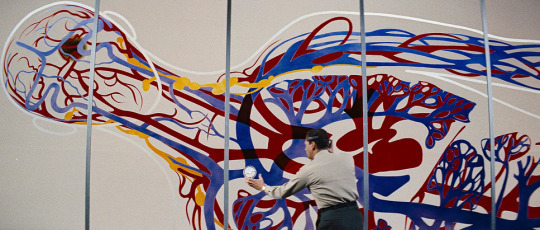


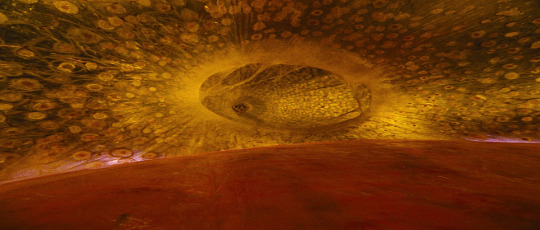
FANTASTIC VOYAGE (1966)
DIRECTOR: Richard Fleischer
CINEMATOGRAPHER: Ernest Laszlo
#Richard Fleischer#Ernest Laszlo#FANTASTIC VOYAGE#1966#1960s#scifi#retro scifi#retro science fiction#movie#science fiction#cinema#cinematography#science-fiction#SciFi Movies#film stills#film still#movie stills
266 notes
·
View notes
Photo
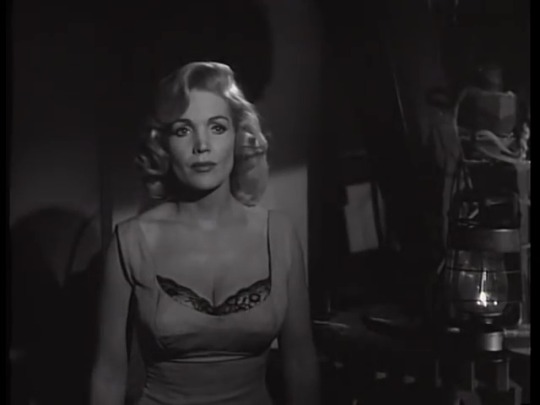



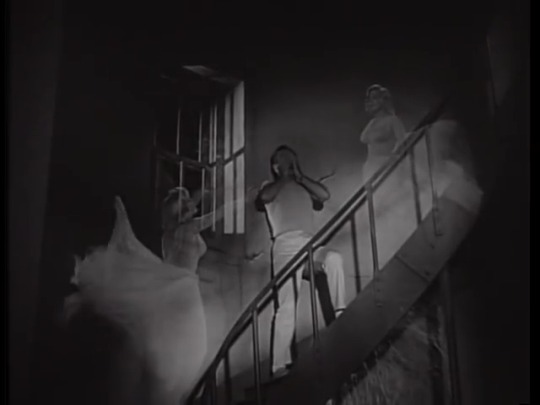

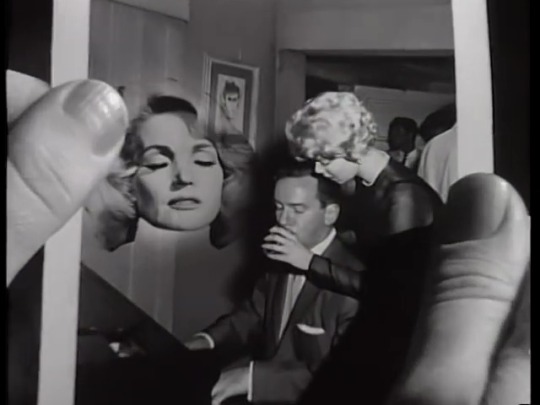

tormented (us, gordon 60)
13 notes
·
View notes